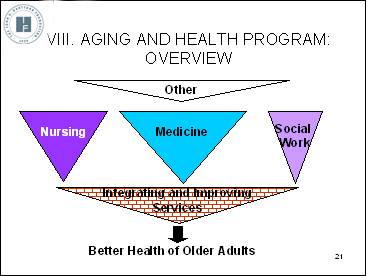The Center for Effective Philanthropy (CEP) has a pretty simple formula for foundation effectiveness:
Clarity of goals and objectives
+
Relevant strategies based in plausible, causal logic that relates grant activities to those goals (aka the Theory of Change)
+
Feedback and monitoring of indicators of progress and impact
=
Philanthropic Effectiveness
 Like any simple formulation, it covers over myriad nuances and details; but for me, it is a compelling vision and one that I would like to live up to. Unfortunately, as with all seemingly simple systems, this is easier said than done. It requires great self-awareness to see all the situations that should fall under these principles and even more courage and determination to do so when you recognize the duty. (In an earlier post inspired by my attendance at CEP’s 2009 conference, I provide further musings on the importance of foundation self-awareness.)
Like any simple formulation, it covers over myriad nuances and details; but for me, it is a compelling vision and one that I would like to live up to. Unfortunately, as with all seemingly simple systems, this is easier said than done. It requires great self-awareness to see all the situations that should fall under these principles and even more courage and determination to do so when you recognize the duty. (In an earlier post inspired by my attendance at CEP’s 2009 conference, I provide further musings on the importance of foundation self-awareness.)
So imagine my horror when I realized while attending the CEP conference that our most recent strategic plan was not even on the Web site!!! We have strategic reviews of each of the four portfolio areas—medicine, nursing, social work, and integrating and improving services—posted, but our overarching vision? Nope. My bad.
So here is the bottom line:
No laughing. I never pretended to be a great graphic artist, and I’m sure you would prefer that I spend the money on grants rather than improving my doodles.
For even more bottom line, here are our measurable objectives for the next five to ten years:
A. Medicine: All MDs Prepared to Care for Older Adults
Indicators of Impact
• Geriatrics divisions increase faculty size by 20%
• 50% of medical schools adopt new geriatric competencies
• 50% of residencies, specialties, and subspecialties adopt specific geriatric training standards (currently 30%)
Strategies
• Faculty development
• Curricular change
• Centers of excellence
B. Nursing: All Nurses Prepared to Care for Older Adults
Indicators of Impact
• 50% of nursing schools adopt AACN geriatric competencies (BSN, APRN)
• 50% of nursing schools have one or more geriatrics specialized faculty members (currently 30%)
Strategies
• Faculty development
• Curricular change
• Centers of Excellence
C. Social Work: All SWs Prepared to Care for Older Adults
Indicators of Impact
• 50% of MSW programs require coursework in aging (currently 25%)
• 60% of programs have two or more faculty members specializing in geriatrics
• 75% of MSW programs adopt the Hartford Practicum model for training (currently 30%)
Strategies
• Faculty development
• Curricular change
D. Integrating and Improving Services: Care Delivery Is Redesigned to Promote Quality Geriatrics
Indicators of Impact
• Two new models of care successfully demonstrate clinical benefit and feasibility
• Four models in dissemination become self-sustaining in their spread
Strategies
• Model development and testing in applied settings
• Dissemination of innovations
• Developing agents of change
So, now you know. Do you think you can do it—since in this context you all in the outside world are the doers? Do you think these are the right things? Are you clearer about why we make the decisions we do?
One of the CEP nuances is that the strategy has to be informed by the external world: the grantees, other experts, the experience of other foundations, etc. We are always working on our strategy, so next time your program officer asks you for some input, give it. The grant you save may be your own.
The entire strategic plan (strategic PowerPoint, some might say) can be found at www.jhartfound.org/staff_presentations.htm. Comments would be very welcome, as would suggestions as to how best to measure some of these indicators of impact. Like any strategic plan, this is a work in progress.

